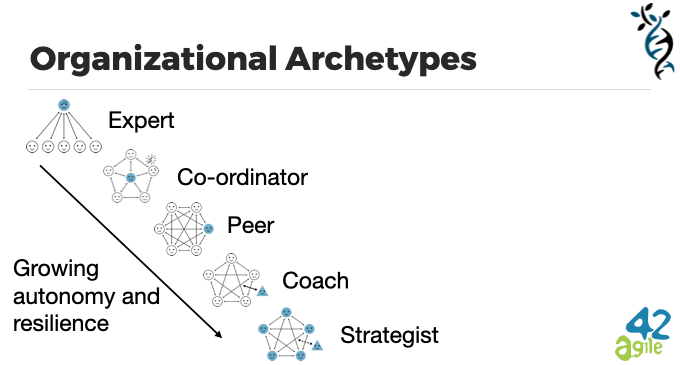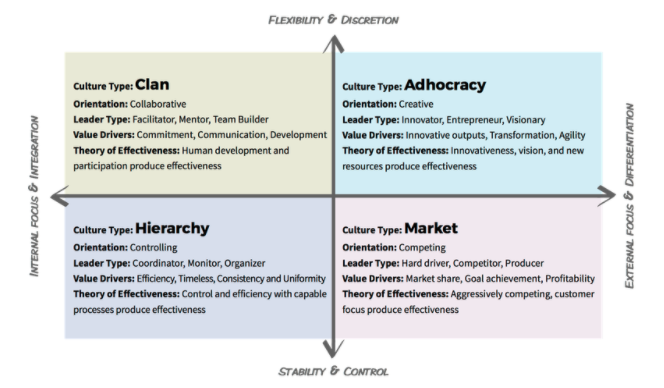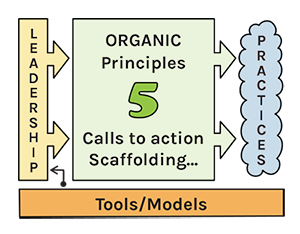Archetypes: mapping organization, culture and leadership
The empirical evidence agile42 has gathered from multiple client engagements, supports the theory that ideal characteristics of a leader are based on archetypes, ideal types of what an organization should look like and their underlying culture. This has led us to observe a very strong relationship between leadership attitude, organizational design, and organizational culture.
The idea behind ORGANIC agility is that there isn’t any right or wrong leadership behavior, but rather there are behaviors that one can master, and can be appropriately called upon in specific situations within a specific culture: if a leadership behavior doesn’t correspond to the cultural expectations of the people involved, it will very likely cause a negative emotional response, and potentially increase motivational debt.
In this webinar I gave an overview of different archetypes that are expressed under specific conditions and bring leadership behavior, organizational design and organizational culture together. We also explored some methods within the ORGANIC agility framework, that allow you to recognize the archetype to which an organization can be mapped at a given moment in time, and provide guidance for transitioning to a different archetype, while increasing coherence between culture, organizational design and leadership behaviors.
If you missed the live webinar, I have great news for you! Here you can find the recording of the session, available on YouTube. Please have a look at it and feel welcome to share it around with friends and colleagues.
During the webinar, I mentioned the Archetype Assessment as a part of the ORGANIC agility framework. The archetype assessment is a service we provide either virtually or in-person, and it is an engaging and meaningful activity that reveals what people think about the way leadership achieves results in your organization. It allows groups and leaders to express what combinations (archetypes) they see themselves operating in, what expectations they have of one another, and how they can make changes without alarming and disappointing the people they work with. The aim is to support cohorts going through any sort of change, whether intentional (such as an agile journey) or unintentional (such as a merger). Change creates friction and both leaders, and the people they work with, struggle with knowing in what ways it is useful to change and how they can best reduce resistance and help support growth in themselves and others.
Please have a look at the information, and contact us if you are interested or have questions!
I mentioned the webinar from our colleague, Lasse Ziegler, in this webinar, about Leadership in complex environments, and I recommend you have a look at that one to get an understanding of the leadership styles mentioned briefly in my webinar.
You are welcome to join our ORGANIC agility Foundation valid for Certified Agile Leadership I (CAL1) training to get an introduction to ORGANIC agility and a deep dive into the Leadership framework. The topics touched in the ORGANIC agility webinars are part of this training!
Here you can also access the slides I used during the webinar.
For more webinars and recordings, please look here!
Hope to see you in the next ones!





